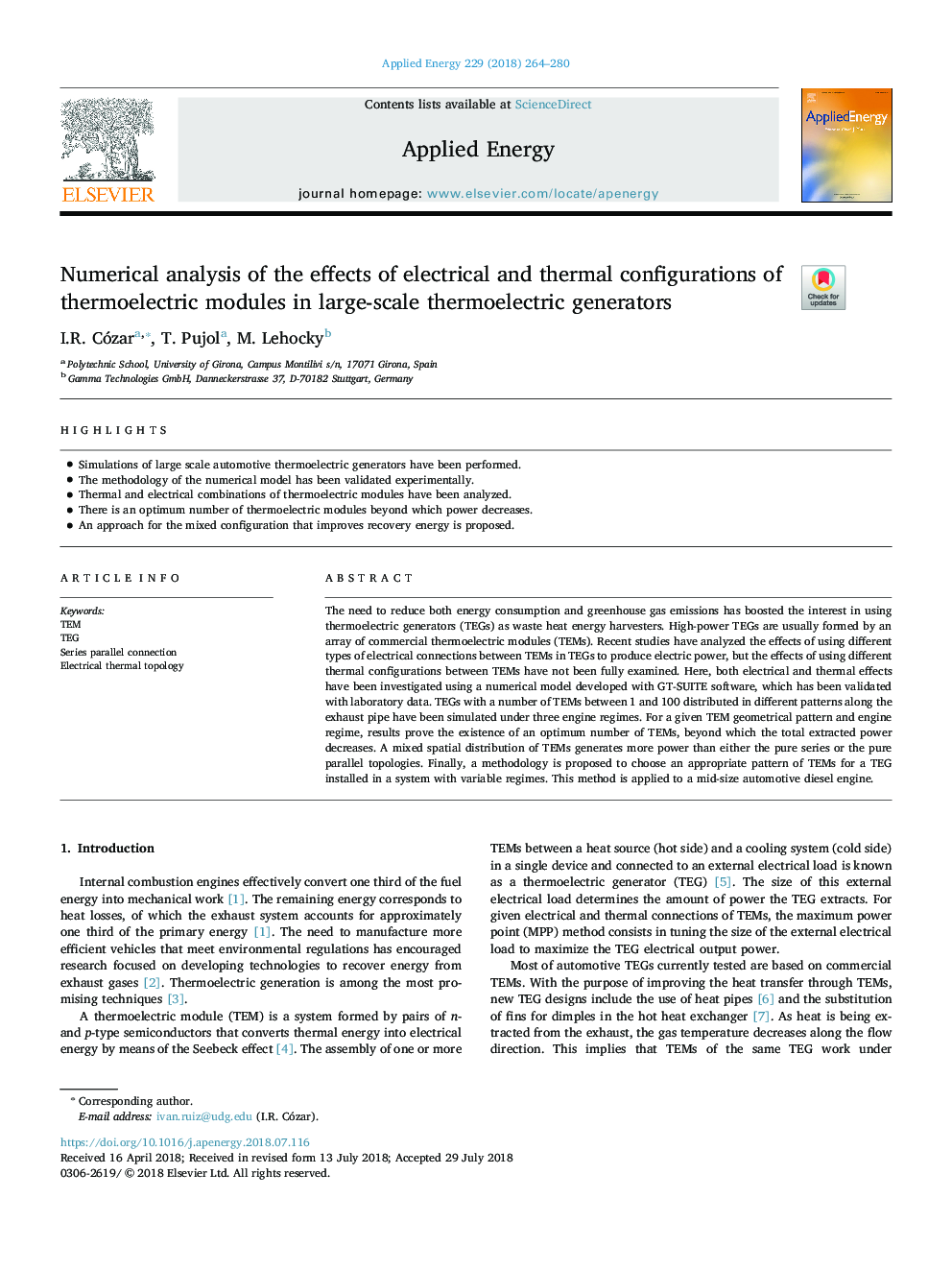| Article ID | Journal | Published Year | Pages | File Type |
|---|---|---|---|---|
| 6679646 | Applied Energy | 2018 | 17 Pages |
Abstract
The need to reduce both energy consumption and greenhouse gas emissions has boosted the interest in using thermoelectric generators (TEGs) as waste heat energy harvesters. High-power TEGs are usually formed by an array of commercial thermoelectric modules (TEMs). Recent studies have analyzed the effects of using different types of electrical connections between TEMs in TEGs to produce electric power, but the effects of using different thermal configurations between TEMs have not been fully examined. Here, both electrical and thermal effects have been investigated using a numerical model developed with GT-SUITE software, which has been validated with laboratory data. TEGs with a number of TEMs between 1 and 100 distributed in different patterns along the exhaust pipe have been simulated under three engine regimes. For a given TEM geometrical pattern and engine regime, results prove the existence of an optimum number of TEMs, beyond which the total extracted power decreases. A mixed spatial distribution of TEMs generates more power than either the pure series or the pure parallel topologies. Finally, a methodology is proposed to choose an appropriate pattern of TEMs for a TEG installed in a system with variable regimes. This method is applied to a mid-size automotive diesel engine.
Related Topics
Physical Sciences and Engineering
Energy
Energy Engineering and Power Technology
Authors
I.R. Cózar, T. Pujol, M. Lehocky,
